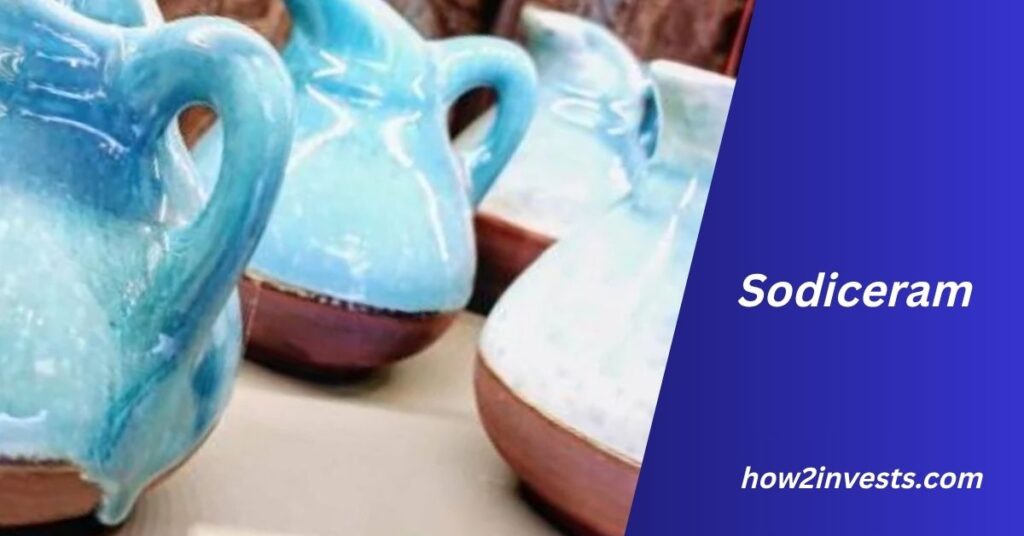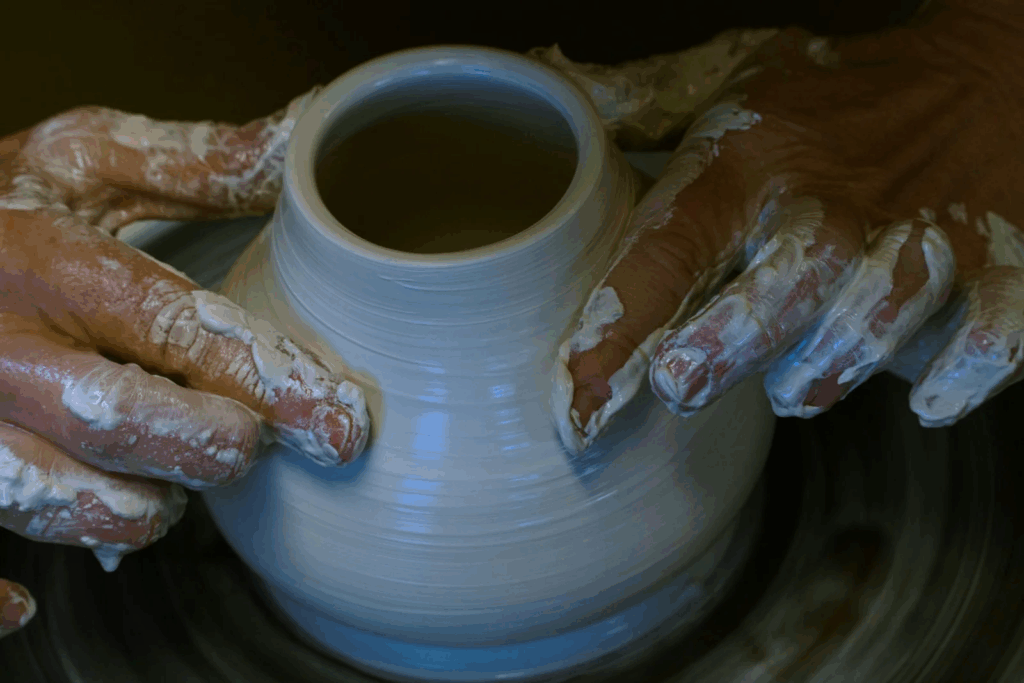Sodiceram: The Future of Ceramic Materials for Advanced Applications

Sodiceram is revolutionizing the ceramics industry with its next-generation properties that combine sodium-based compounds with traditional ceramic technologies. This breakthrough material offers incredible advantages for a range of industrial applications, from high-temperature environments to reducing environmental impact. In this article, we will explore the many facets of sodiceram, its uses, benefits, and its potential in various industries.
What is Sodiceram?
Sodiceram is an innovative ceramic material designed by integrating sodium-based compounds into traditional ceramics. The purpose of incorporating sodium is to enhance the material’s vitrification process, reduce porosity, and improve overall durability and resistance to environmental factors. This material is specifically engineered to withstand extreme temperatures, making it ideal for use in industries like construction, electronics, and aerospace.

Unlike traditional ceramics, which are typically made of silicate materials, sodiceram features a unique composition that gives it superior physical properties, including increased strength, reduced brittleness, and improved thermal shock resistance. Its versatility makes it a game-changer for various applications, ranging from high-performance equipment to sustainable construction materials.
How Does Sodiceram Work?
Sodiceram works by utilizing sodium-based compounds that enhance the vitrification process during the firing of the ceramic material. Vitrification is the process where the ceramic material is heated to a high temperature to create a glass-like surface. In traditional ceramics, this process can lead to the formation of pores, reducing the material’s strength. However, by introducing sodium compounds, sodiceram reduces these pores, making the material more compact, dense, and durable.
Additionally, the sodium compounds help to reduce the overall porosity of the material. Lower porosity leads to better resistance to moisture and chemical infiltration, making sodiceram highly resistant to wear and tear. This enhanced durability also makes sodiceram a preferable option in industries that deal with high temperatures and harsh conditions.
Also Read: Onnilaina: The New Wave of Business Innovation
Benefits of Sodiceram
1. Enhanced Durability
The key advantage of sodiceram is its exceptional durability. Thanks to its reduced porosity and enhanced vitrification process, sodiceram is much stronger than traditional ceramics. This increased strength makes it highly resistant to cracking, chipping, and wear. It is ideal for use in demanding environments where conventional materials may fail.
2. Better Thermal Shock Resistance
Sodiceram’s sodium-based composition gives it an edge over traditional ceramics when it comes to thermal shock resistance. This means that sodiceram can withstand rapid temperature changes without breaking or degrading. It is perfect for high-temperature applications such as kilns, furnace linings, and heat exchangers.
3. Environmental Sustainability
Sodiceram offers a sustainable alternative to other ceramics. The use of sodium-based compounds allows for better energy efficiency during production. Furthermore, because of its enhanced durability, sodiceram’s long lifespan reduces the need for frequent replacements, helping to lower overall material consumption and waste generation.
4. Improved Aesthetic Qualities
Apart from its technical advantages, sodiceram also offers aesthetic benefits. The smooth, glossy finish that is created through the vitrification process makes it suitable for high-end decorative applications, including tiles, countertops, and flooring. The sleek look of sodiceram makes it an attractive choice for both functional and decorative purposes.
5. Cost-Effectiveness
Although sodiceram may be more expensive initially than traditional ceramics, its long-lasting nature, resistance to environmental factors, and ability to withstand high temperatures make it a cost-effective choice in the long run. With fewer replacements required and better performance, sodiceram provides value for money.
Applications of Sodiceram
1. Construction Industry
Sodiceram is poised to make a significant impact on the construction industry. It is being explored for use in building materials such as tiles, bricks, and facades. The material’s resistance to temperature fluctuations and moisture makes it perfect for exterior construction where traditional materials might deteriorate. Additionally, sodiceram’s aesthetic appeal makes it an excellent choice for decorative finishes, offering a modern look without compromising on durability.
Also Read: Pootenlord: The Rise of a Digital Icon
2. Aerospace and Aviation
The aerospace industry requires materials that can perform under extreme conditions. Sodiceram’s high-temperature resistance and low porosity make it an ideal material for components in engines, turbines, and heat shields. The material’s strength and durability also make it suitable for parts that are subjected to thermal cycling, such as landing gear components.
3. Electronics and Semiconductor Manufacturing
The electronics industry benefits from sodiceram’s thermal shock resistance and insulating properties. It is being used for components like circuit boards and capacitors, where its durability and resistance to heat can extend the lifespan of electronic devices. In semiconductor manufacturing, sodiceram’s non-porous nature reduces the risk of contamination during the production process.
4. Energy Production
Sodiceram is also finding use in the energy sector, particularly in applications involving high temperatures. Its ability to withstand extreme heat makes it ideal for components in energy production facilities, such as furnaces, boilers, and reactors. The material helps to improve the efficiency of these systems by providing better insulation and reducing heat loss.
5. Automotive Industry
In the automotive sector, sodiceram is being explored for use in engine parts, exhaust systems, and other high-performance components. Its resistance to heat and wear makes it a viable material for improving the longevity and efficiency of various automotive parts. Additionally, sodiceram’s strength makes it suitable for use in structural components that require high durability.
The Future of Sodiceram
As research and development in the field of advanced ceramics continue to progress, sodiceram’s potential applications are expanding. Researchers are exploring new ways to integrate this material into other industries, including healthcare and robotics. Its unique properties, such as high strength, thermal resistance, and sustainability, position it as a future material of choice for many high-performance applications.
Key Trends in Sodiceram Development
- Customization for Specific Applications: Future developments will likely involve customizing sodiceram for particular industries, ensuring that the material is fine-tuned to meet the exact requirements of each sector.
- Integration with Other Materials: There is potential for sodiceram to be combined with other materials, such as polymers or metals, to create hybrid solutions that capitalize on the strengths of both components.
- Sustainable Production Methods: As demand for sustainable products increases, further advancements in the eco-friendly production of sodiceram will likely be explored. This may include reducing energy consumption during manufacturing or utilizing renewable resources in the production process.
Also Read: MataRecycler: Revolutionizing Recycling with Advanced Technology
Frequently Asked Questions (FAQs) About Sodiceram
What is sodiceram made of?
Sodiceram is composed of sodium-based compounds integrated into traditional ceramic materials. These compounds enhance the vitrification process, reduce porosity, and increase the material’s overall durability and resistance to high temperatures.
What are the benefits of using sodiceram over traditional ceramics?
Sodiceram offers improved durability, better thermal shock resistance, environmental sustainability, and a smooth, aesthetically pleasing finish. It is also more cost-effective in the long run due to its longer lifespan.
In which industries can sodiceram be used?
Sodiceram can be used in various industries, including construction, aerospace, electronics, energy production, and automotive manufacturing, thanks to its heat resistance, durability, and versatile properties.
Is sodiceram environmentally friendly?
Yes, sodiceram is considered environmentally friendly because it reduces waste and the need for frequent replacements. Additionally, its production process is more energy-efficient than traditional ceramics.
Can sodiceram be used for decorative purposes?
Yes, sodiceram’s smooth, glossy finish makes it an ideal material for decorative applications such as tiles, countertops, and flooring, in addition to its functional uses.
Conclusion
Sodiceram is a cutting-edge material that is set to redefine the future of ceramics. Its unique composition and enhanced properties offer numerous benefits for industries ranging from construction to aerospace. With its superior durability, thermal shock resistance, and environmental sustainability, sodiceram is poised to become the material of choice for high-performance applications. As research continues and new applications are discovered, sodiceram will undoubtedly play a pivotal role in shaping the future of advanced materials.
By understanding and embracing the potential of sodiceram, industries can unlock new possibilities for innovation and efficiency, setting the stage for a more sustainable and high-performing future.




